YYYYMMDD >>> BACK HOME <<< >>> SELECTED FEATURES <<< >>> INTERVIEWS <<<
[20240425]
COURTYARD OF ATTACHMENTS by TREVOR YEUNG at HONG KONG IN VENICE curated by OLIVIA CHOW commissioned by M+ at LA BIENNALE DI VENEZIA [from 20240420 to 20241124]
[Photos: Ela Bialkowska, OKNO Studio]
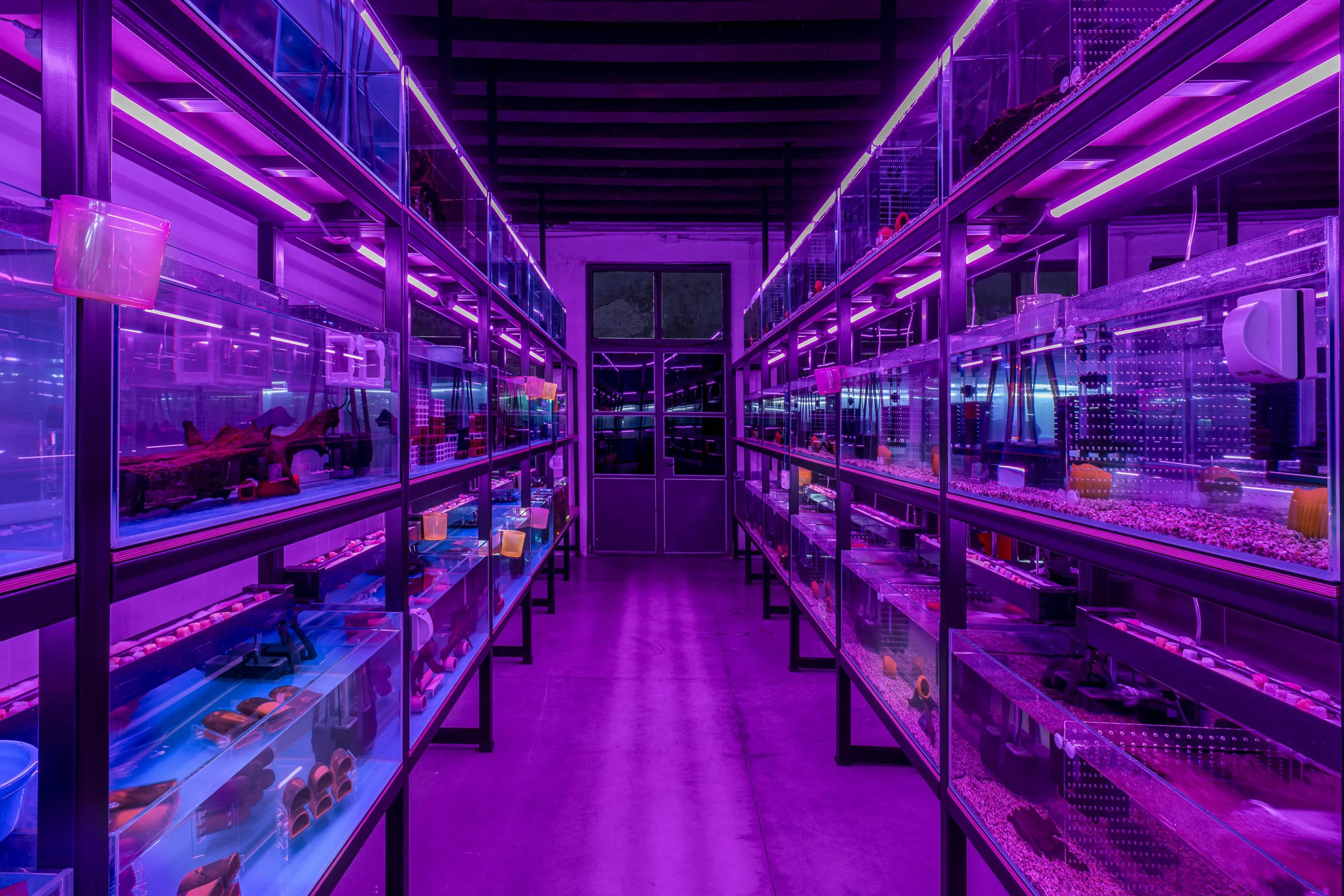


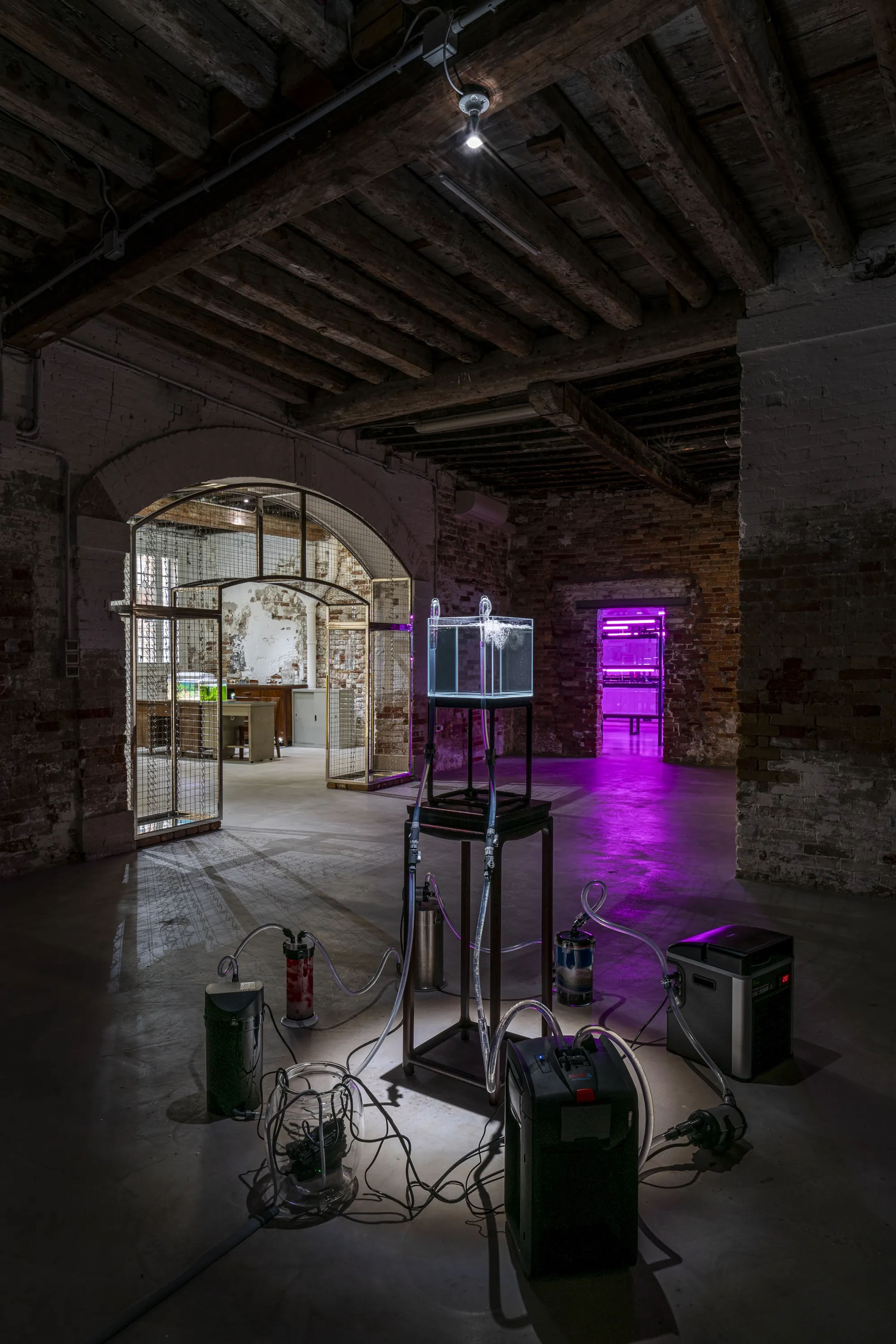

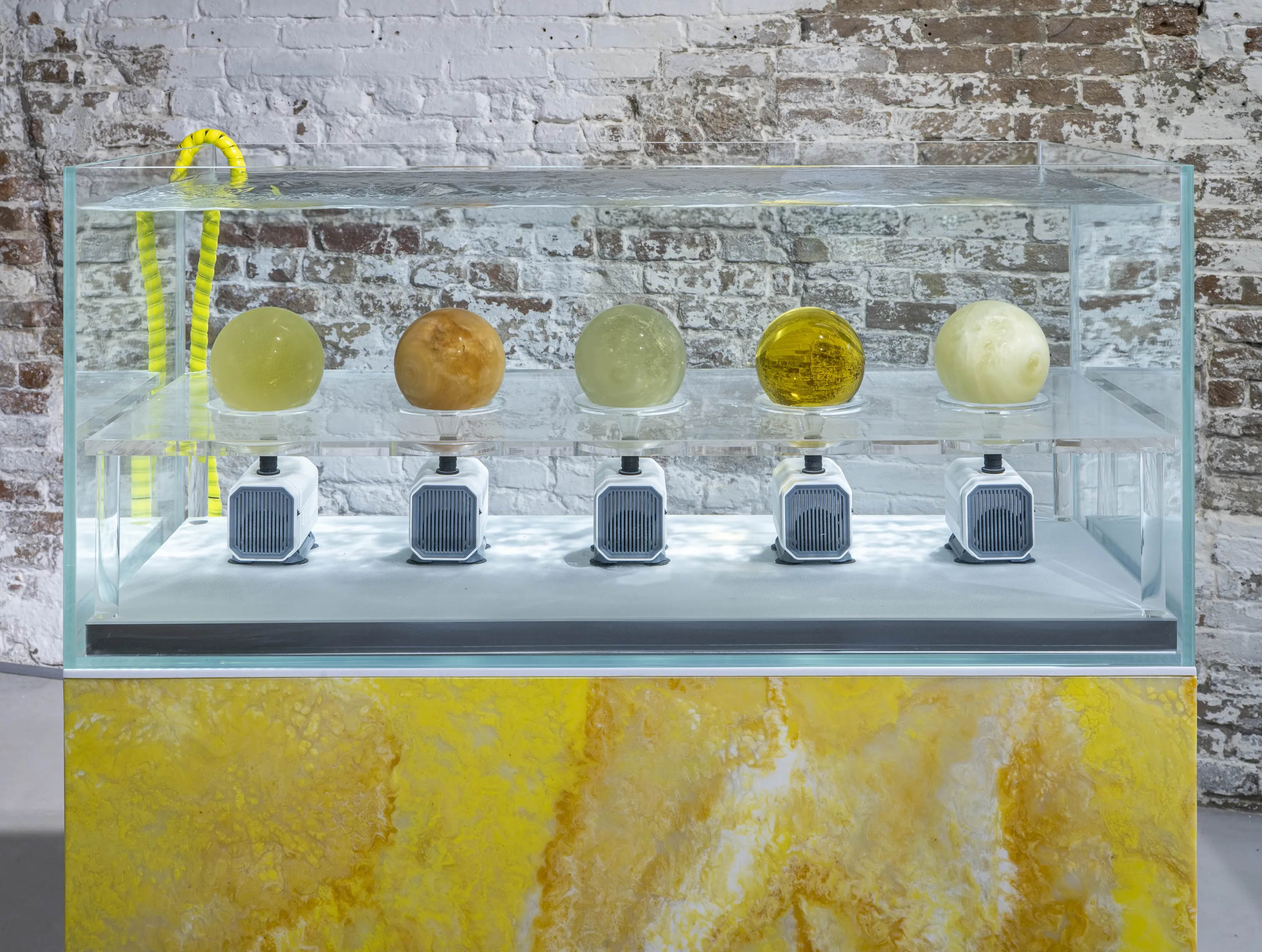
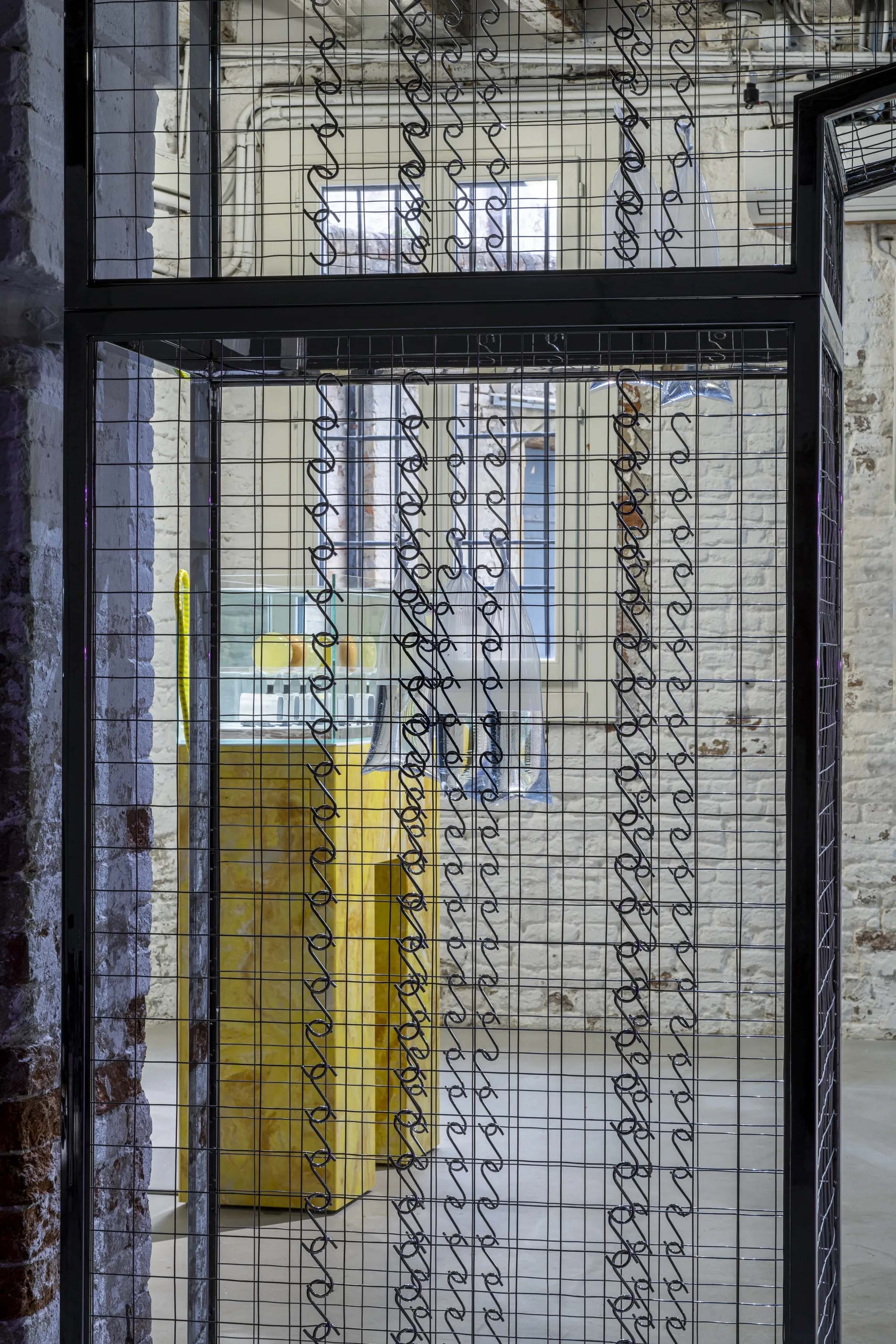

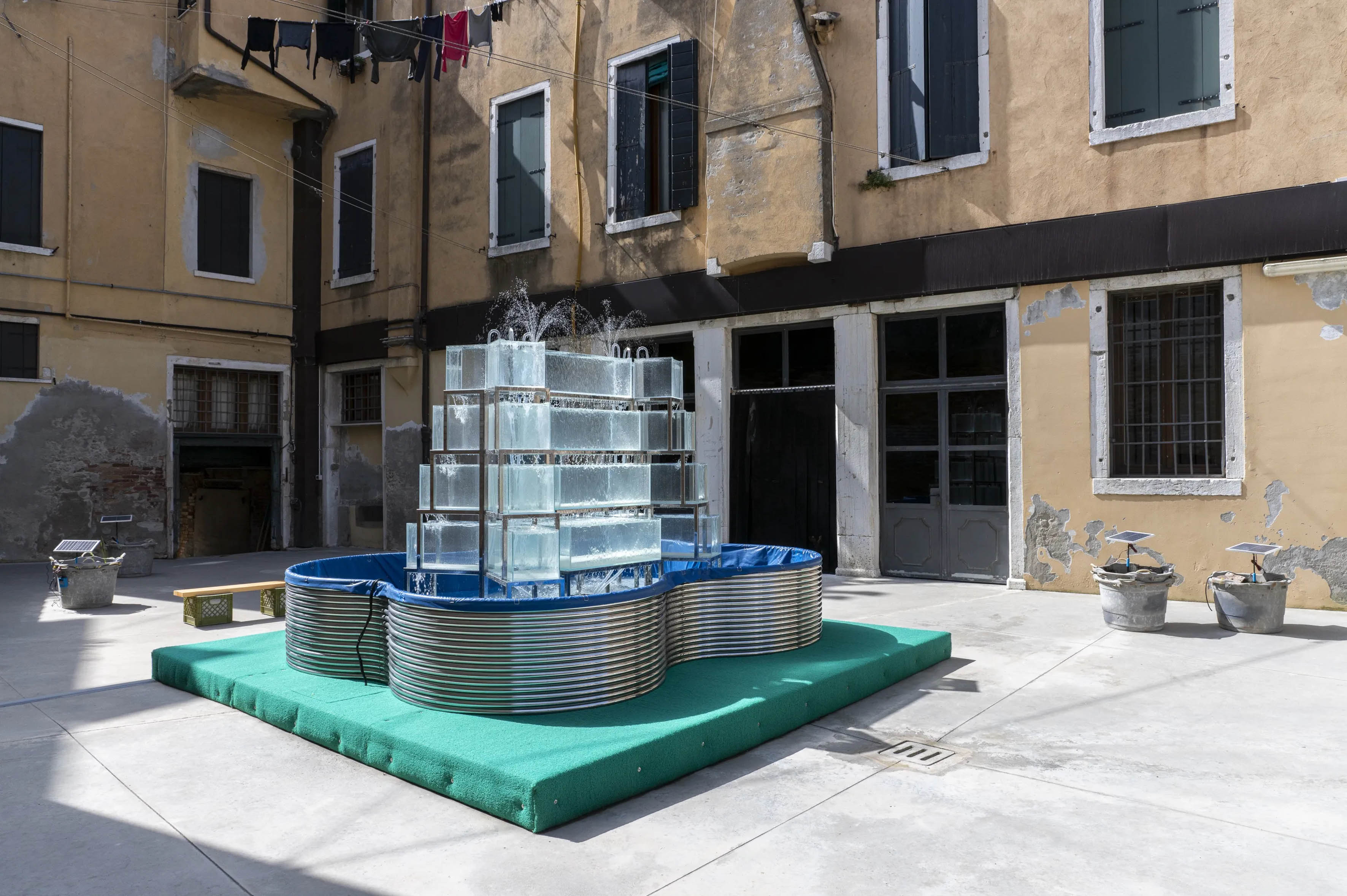

In this exhibition, Trevor Yeung invites us to reflect on the expectations and social codes that condition the way we relate to one another. Social conventions are a natural product of our desire for order, efficiency, and control. However, our feelings make precise, rational calculation impossible. For Yeung, this emotional complexity not only encompasses human relationships, but also extends to the plants and animals that are part of our ecology in the widest sense. With his profound understanding of botany, horticulture, and aquatic ecosystems, Yeung weaves together deeply personal encounters and astute social observations in intricate sculptures, photographs, and installations. Hong Kong is an enduring reference and source of material for Yeung, but the emotional resonance of his work and his concern with power dynamics are universal in their scope. Yeung explores sentimentality, desire, and relationships of power through the concept of attachment. Here, attachment manifests as feelings of connection with objects as well as a longing for someone special. Yeung’s presentation articulates his intimate experiences and keen observations of the relationships between humans and aquatic systems, drawing from references that include his father’s seafood restaurant, pet shops, feng shui arrangements, and the fish he kept as a child.
The exhibition is organised into four installations. Each features fully operational aquariums, complete with filters and accessories, yet devoid of living fish. The palpable sense of absence that saturates the exhibition conjures the cyclical nature of life and the delicate equilibrium of social ecology, which is always susceptible to disorder.
The site-specific work Pond of Never Enough occupies the courtyard. The work is a fountain made of fish tanks reminiscent of those found in Chinese seafood restaurants. The fishless fountain extracts water from the Grand Canal and filters clean water back into the lagoon, foregrounding the ecosystem that sustains Venice as well as the workings of the city’s tourist economy. Throughout the exhibition period, the fountain is cleaned regularly to draw attention to the labour needed to support these fragile habitats and, by extension, the systems that structure our lives. Several self-sustaining gardens of lotuses are placed throughout the courtyard alongside the fountain in an installation titled Mx. Trying-My-Best. Lotus flowers, which are symbols of purity in Chinese iconography, can blossom amid landfills and muddy water, highlighting the plant’s strength and ability to adapt to difficult conditions as beacons of hope and icons of determination.
The interior of the exhibition space begins with a reception area that is designed to recall the entrances of small businesses in Hong Kong. An installation comprising two aquariums and second-hand furniture, Two Unwanted Lovers blurs the boundaries between decoration, belief, and commerce. Fish tanks and miniature decorations with flowing water are considered auspicious and are common decorative elements in Chinese businesses. Deconstructing cultural symbols is a recurring aspect of Yeung’s practice, manifested in the set of moss- and algae-covered fish tanks as well as Rolling Gold Fountain, a sculpture featuring rotating spheres that resemble citrines, which are rare gemstones thought to bring wealth and fortune.
The installations Gate of Instant Love and Cave of Avoidance (Not Yours) investigate the feelings of gratification and excitement that come with taking home a new pet. Fish in Hong Kong pet shops are often contained in plastic bags suspended from hanging systems on the wall. Nestled snugly under the archway of the exhibition venue, Gate of Instant Love invites visitors into a restrained version of a pet shop display, featuring only a few empty bags and S-hooks. Moving through the gate and on the left side, the photographic work the stealth that doesn’t hurt/the scratch that doesn’t help echoes the inflated plastic bags on the archway. The image illustrates a broken and used plastic bag that once held water and fish, alluding to the consequences that arise when our innermost desires override thoughtful consideration.
Turning to the right side, visitors arrive at the physical and conceptual centre of the exhibition. Little Comfy Tornado contains a miniature tornado whirling inside a small fish tank perched atop a tower of stacked plant stools. It is connected to a professional-grade filtration system through a network of tubing. The juxtaposition of the modest aquarium with the seemingly excessive support mechanism evokes a sense of unease and invites consideration of the bureaucratic heaviness that often undergirds the simplest actions in a social system. Little Comfy Tornado’s framing of absence in an atmosphere of vague menace invites new associations about how easily the desire for care and control can spill over into oppression.
Situated in the last room, Cave of Avoidance (Not Yours) is an immersive installation that recreates the interior of a pet shop, albeit one devoid of living fish. Encased within a darkened room, the installation is illuminated only by the lighting systems of the fish tanks. The details of each tank are precisely composed in layers, encompassing decorative elements, air pumps, and a custom breeding apparatus handmade from Hong Kong terracotta. By omitting the fish from the methodically arranged rows of fish tanks, Yeung leads us to reconsider our motivation for creating artificial ecosystems. A closer examination of these vacant containers reveals that the backs of the tanks are mirrored. We might find ourselves replacing the fish in the tanks, inserting ourselves into a system that defines our control over another species.
Finally, placed discreetly throughout the exhibition space are Night Mushroom in shade (Teak Cabinet) and Night Mushroom Colon (Hong Kong in Venice), small clusters of electric night lamps that emerge from the shadows, waiting for visitors to discover them. The mushrooms inhabit the space freely, independent of the strict sequence of galleries. Their presence seems to ask how an entity with no power of its own can survive outside of a rigidly defined system.
In his landscapes of fishless aquariums, Yeung articulates his fascination with artificiality in nature and urban space. He highlights the nuanced relationship between the fish, their caretaker, and a meticulously controlled aquarium. Whether we find ourselves in the position of the fish, the caretaker, or an inanimate part of the landscape, an attachment inevitably arises. At its heart, this is a yearning to be an irreplaceable, distinctly defined part of something larger than ourselves, an ache to love and be loved.
[Text: Olivia Chow]
©YYYYMMDD All content and design by Daniela Grabosch + Ricardo Almeida Roque unless otherwise stated. Images, Videos and Texts can only be used under permission of the author(s).